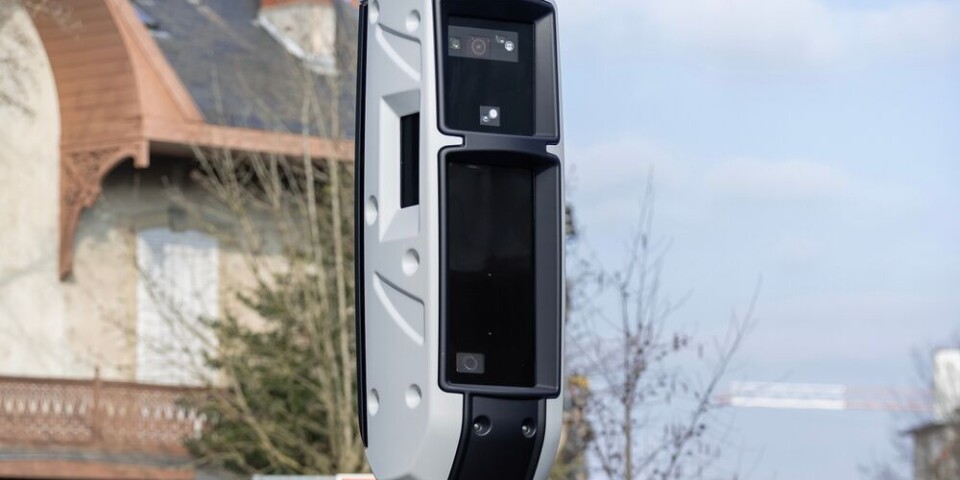-
List: Which departments have seen notaire fees increase – and where will they rise soon?
A third of departments will increase fees to new maximum by May 1
-
Do roof repairs need to be declared to French tax authorities?
Repairs do not usually require planning authorisation to be issued
-
Burglaries: the French cities and towns most - and least - affected
New official stats have been released with significant geographical differences
Building a ‘passive house’ means no more heating bills
It is a turning point for the French passive housing movement – houses built or renovated to use little or no energy for heating and cooling

Just eight months ago France saw its first certified ‘positive energy’ home – one that produces more energy than it uses – and it received the Bepos Effinergie certificate. But it is not in the south soaking up all-day sun for its solar panels – it is in Val d’Oise, north of Paris.
Built by local firm Ecolocost, it will lead next month to the first work for 26 houses on an estate in Val-de-Marne where energy bills (for household appliances) will be €1 a day.
Passive houses and positive energy homes are insulated so well they go far beyond the RT2012 building standards which have been compulsory since 2013 and limit energy consumption to 50kWh/m2 per year. They are also completely air-tight, so no draughts.
Any energy used stays in the house, whether heated towel rails, sunshine coming in the windows, turning on the oven for supper or a wood-burning stove in the lounge.
A new label, Bâtiment passif or Passiv’haus, is for buildings that meet its new standards but Maxime Brard of Ecolocost says the label “adds nothing to the value of the house, but it is the future of regulations and all future eco bonuses or tax credits will be dependent on holding this certification.
“For us, we build a quality house that is very quick to build – we use insulated panels so the basics are done in a day – and which is affordable for a middle-class family with two children who will spend about €350 a year on energy for TV, kitchen appliances etc.”
On the negative side, they cost up to 20% more to build due to more expensive materials. Mr Brard says building costs for standard houses start around €1,400/m2 – so three or four-bed houses from €280,000 – with unique designs costing about €2,000/m2.
However, it is different in the Alps where building costs are higher due to various factors.
Steve Downs, of Ecsus Design in Morzine, says high costs at altitude mean passive houses, with their rapid system of building, can actually be built for less than the average cost.
There are about 2,000 passive buildings in France that have no use for heating boilers etc. They use little or no energy for heating (domestic hot water and energy for household appliances is not included but positive energy houses can even cover that, too).
They have energy use of less than 15kWh/m2 because a typical passive house has:
- Full insulation to get rid of ‘heat bridges’, stop heat loss and keep available heat ‘in’
- Large south-facing windows to take ‘passive’ winter sun (often with overhanging roofs or brise-soleil shades to keep off summer sun and avoid air-conditioning)
- Air-tightness for better comfort and also to stop heat loss, although they may use mechanical ventilation.
Insulation is key and is like pulling on a large overcoat in winter. Many people opt for insulated wood panels, straw bales, cellulose, or fibreglass but there is no restriction.
Concrete/polystyrene walls will, however, end up 50cm thick, straw bales more – and that includes roof and floor.
Mr Downs says passive houses have to be “exceptionally well-insulated and make full use of free solar gain in winter but many still use an extra heat source for comfort. Rules say 19C is the ‘ideal’ temperature but today people want more comfort and use a bit of heat to be properly warm in winter.
“Before we moved to Morzine we built our first house, in Lot-et-Garonne in the south-west, and a combination of solar collectors to heat water and an air-source heat pump means the total heating bill has never been more than €86 a year.”
In the south-west traditional building costs are €1,500 to €1,700/m2 and the Alps are much dearer at €2,500/m2. “We use Sips structurally insulated panels and our costs are about 15% dearer in the south-west but 20% cheaper in the Alps.”
When complete, the Ecolocost estate in Val-de-Marne will have solar panels on most roofs.
























